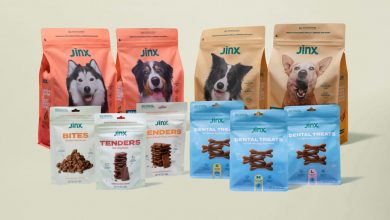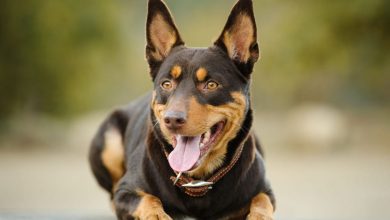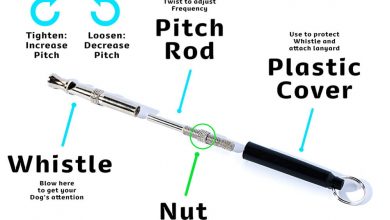Unlocking the Secrets of Treating Non-Pathogenic Yeast in Canine Stool: A Comprehensive Guide

1. Introduction
Non-pathogenic yeast is a type of fungus that can be found in the gastrointestinal tract of dogs. It is usually harmless and does not cause any serious health problems, but it can sometimes lead to uncomfortable symptoms such as diarrhea, vomiting, and weight loss. In this article, we will discuss what non-pathogenic yeast is, the common causes of it in dogs, symptoms to look out for, diagnosis and treatment options available, home remedies for treating it in dog stool, diet changes to help prevent it from recurring, and when to see a vet for treatment.
2. What is Non Pathogenic Yeast?
Non-pathogenic yeast is a type of fungus that lives in the gastrointestinal tract of dogs. It’s usually harmless and does not cause any serious health problems. However, if there is an overgrowth of this fungus in the gut then it can lead to uncomfortable symptoms such as diarrhea, vomiting and weight loss.
3. Common Causes of Non Pathogenic Yeast in Dogs
The most common causes of non-pathogenic yeast overgrowth in dogs are poor diet or an imbalance in their microbiome (the balance between beneficial bacteria and harmful bacteria). Other potential causes include antibiotic use (which kills off beneficial bacteria), stress (which can weaken the immune system), or exposure to contaminated food or water sources.
4. Symptoms of Non Pathogenic Yeast Infection in Dogs
The most common signs and symptoms associated with non-pathogenic yeast overgrowth are diarrhea, vomiting and weight loss. Other possible symptoms include increased gas production, bloating or flatulence, excessive licking or chewing at paws or skin areas due to discomfort or itchiness caused by the infection.
5. Diagnosis and Treatment of Non Pathogenic Yeast in Dogs
If you suspect your dog has a non-pathogenic yeast infection then you should take them to see a vet for diagnosis and treatment as soon as possible. The vet may order tests such as fecal analysis or blood work to confirm the presence of non-pathogenic yeast overgrowth before starting treatment with antifungal medications such as ketoconazole or fluconazole tablets/capsules/injections depending on severity of infection.
6. Home Remedies for Treating Non Pathogenic Yeast in Dog Stool
There are some home remedies that may help reduce the levels of non-pathogenic yeast present in your dog’s stool:
• Feed your dog probiotics – Probiotics contain beneficial bacteria which can help restore balance within the gut microbiome
• Feed your dog prebiotics – Prebiotics act as food for probiotics which helps them thrive within the gut environment
• Add apple cider vinegar to your dog’s water – Apple cider vinegar has antifungal properties which may help reduce levels of non-pathogenic yeast present
• Increase dietary fiber intake – Increasing dietary fiber intake helps keep stools firm which helps reduce levels of non-pathogenic yeasts present
• Avoid processed foods – Processed foods contain high amounts of sugar which can feed non-pathogenic yeasts leading to further overgrowth
• Add yogurt or garlic into your dog’s diet – Both yogurt & garlic have antifungal properties which may help reduce levels of non-pathogenic yeasts present
7. Diet Changes to Help Prevent Non Pathogenic Yeast in Dog Stool
Making changes to your dog’s diet can help reduce their risk for developing a non-pathogenic yeast infection:
• Feed high quality proteins – High quality proteins provide essential amino acids needed by beneficial bacteria within the gut microbiome
• Reduce carbohydrate intake – Carbohydrates feed fungi so reducing their intake may help prevent an overgrowth from occurring
• Increase fiber intake – Increasing dietary fiber helps keep stools firm which reduces chances for fungi spores from taking hold
• Avoid processed foods & treats – Processed foods & treats contain high amounts of sugar & other additives which can feed fungi
• Include probiotic rich foods into their diet – Probiotic rich foods such as yogurt & kefir provide beneficial bacteria needed within the gut microbiome
8. When To See a Vet For Treatment Of Non Pathgenic Yeast In Dog Stool
If you notice any signs or symptoms associated with a non pathologic yeast infection then you should take your pup to see a vet right away so they can be properly diagnosed & treated before any further complications arise from this condition. A vet will be able to recommend medications & treatments tailored specifically towards treating this condition based on its severity & underlying causes identified during diagnosis process.
9 Conclusion
Non pathologic yeasts are usually harmless but they can cause uncomfortable symptoms such as diarrhea,vomiting,and weight loss if left untreated.To prevent these issues it’s important that pet owners pay attention towards any changes they notice within their pup’s stool.If any signs appear then seeking professional medical advice from veterinarian should be done immediately.Additionally making changes towards pet’s diet,such as increasing dietary fibers,avoiding processed food,and adding probiotic rich food sources into their meal plan will also help prevent recurrence.




